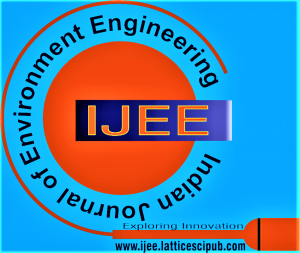![]()
Physicochemical Studies, Characterization & Adsorption Capacity of Activated Carbon Derived from Dathura Stronsium Fruit Shell
Kavita Gour
Dr. Kavita Gour, Associate Professor, Chemistry, Priyadarshini J L College of Engineering Nagpur, India.
Manuscript received on 25 April 2021 | Revised Manuscript received on 8 May 2021 | Manuscript Accepted on 15 May 2021 | Manuscript published on 30 May 2021 | PP: 1-4 | Volume-1 Issue-1, May 2021 | Retrieval Number: 100.1/ijee.A1801051121 | DOI: 10.54105/ijee.A1801.051121
Open Access | Ethics and Policies | Cite | Mendeley | Indexing and Abstracting
© The Authors. Published by Lattice Science Publication (LSP). This is an open-access article under the CC-BY-NC-ND license (http://creativecommons.org/licenses/by-nc-nd/4.0/)
Abstract: In the Present investigation various activated carbon derived from waste material of plant has been synthesized .These carbon materials have high porosity .This high degree of porosity of adsorbents is associated with large surface area, which makes it an excellent adsorbent for removal of Heavy Metals. The activated carbon has advantages over the other with respect of its adsorption capacity, operating Characteristic &Cost. The activated carbon materials have been characterized by surface area, particle size, bulk density, Volatile matter, Moisture content, Ash content, FTIR &SEM studies. The goal of the present investigation was an attempt to develop low cost, highly effective and simple to use activated carbon materials for removal Cr(VI), Cd(II) and Zn(II) from contaminated water based on adsorption phenomenon. This newly developed adsorbent has been proved to be more promising for heavy metals removal without affecting the quality of treated water.
Keywords: Adsorbent, Activated Carbon, Porosity, Heavy Metals
Scope: Environmental Engineering
